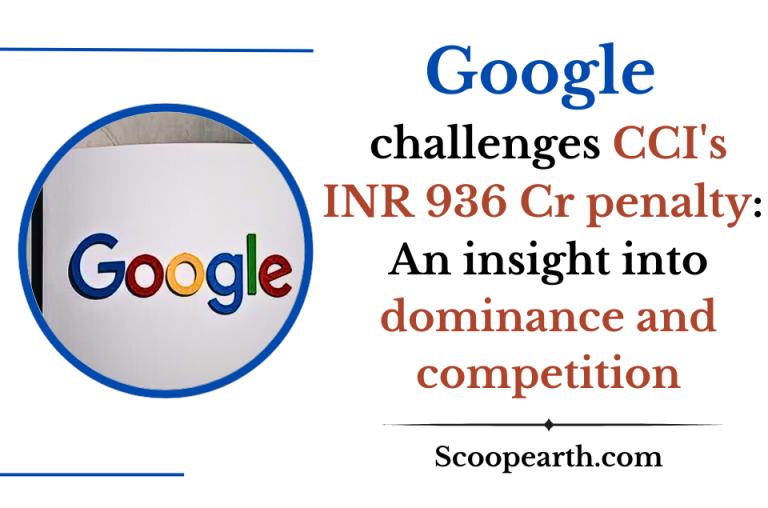In the recent legal battle of a tech giant Google against the Competition Commission of India (CCI) over a large amount of INR 936 crore penalty the latter won. The problem is associated with claims of GPBS (Google Play Billing System) dominance abuse and monopoly on the part of Google Pay.
Charges and Google’s defense
- Dominance Abuse Allegations
- CCI alleged that Google was abusing its dominant status through the functioning GPBS and Google Pay which was in turn preventing fair competition.
- Google’s counsel, in its turn, holds that the charges are without the basis of real evidence, only assumptions. The corporation insists that it has not breached any guidelines or laws.
- GPBS and Google Pay
- GPBS is the foundation for the Google Billing System in applications. It streamlines those transactions within apps installed from the Google Play Store.
- Google Pay, however, is the company’s UPI application for digital wallet use in India.
- Collect-Flow System
- Google’s defense relies on a unique payment flow according to Google Pay.
- Just as Google Play Store differs from other UPI apps, it sends the payment request to Google Pay to authenticate them. This method, known as the “collect-flow”, guarantees their safety.
- Google stands for the view that this method is in agreement with the rules put forward by the National Payments Corporation of India (NPCI).
- Market
- CCI countries claim market access denial but have not defined a relevant market in concrete terms.
- Google’s lawyer argues this point by stating that CCI must precisely determine the relevant market in order for the case to proceed.
- Reduced Commission and Controversy
- The situation worsened when Google levied lower commission on in-app purchases by the intervention of CII.
- Initially, the price range was about 15-30%, but little by little it lowered to 11-26%.
- This resulted in the case becoming a hotly debated topic and attracted the attention of CCI.
The Larger Context
- Erosion of Competition
- CCI should figure out whether GPBS eliminates equivalence in the competition in the market of payment processing.
- However, Google Pay’s presence could have also had an impact on other players, which CCI needs to substantiate it.
- CCI’s Order and Investigation
- CCI directed a probe on the user choice billing system of Google.
- The order listed that there were violations under Section 4 of the Competition Act.
- The director general was ordered to submit a report of the investigation no later than 60 days.
- Google’s Stance
- Google said that it was following the rules and that the user’s security was its main priority.
- The enterprise claims that the amount of the penalty is unclear and does not correlate with the facts presented.
Implications of this legal battle
The dispute between Google and the CCI, Competition Commission of India about the penalty of INR 936 crore is an important issue for both tech industry and competition regulation.
- Competition and Dominance
- This case illustrates that healthy competition and using the power of tech giants is a difficult task.
- A fine for CCI is a sign of a tougher approval in the market for powerful companies. There may be similar questions posed to other companies for the way they do their business.
- Market Definition and Abuse
- The legal action demonstrates how critical it is to define the relevant market directly. CCI should assess whether or not Google’s actions were indeed acted as barriers to competition in certain areas.
- The outcome will establish a precedent on which regulators will draw when they are dealing with other similar cases which are related to digital platforms.
- Innovation vs Monopoly
- Google argues defense by innovation and user security. The company stands for that its original collection flow system fits in with the regulatory requirements.
- However, opponents also argue that this type of dominance could entail monopoly which in turn can confine other service providers.
- User Choice and Consumer Welfare
- The penalty is about Google’s reduction of the commission for in-app purchase. Although this action boosts the profits of app developers, it also brings in troubling doubts about consumer welfare.
- The legal battle will show whether Google’s actions provide users with real competition or merely protect the company’s goals.
- Global Implications
- The matter is not restricted to India alone. A similar situation is observed globally; the regulators are looking into the practices of the tech giants.
- The result may affect how other nations perceive the issue of competition in the digital environment.
- Business Practices and Transparency
- Corporations will closely follow the case in order to learn about the boundaries of acceptable business practices.
- Transparency in billing systems, app store policies, and payment gateways will be among the areas of focus.
- Legal Precedent
- The last stage will lay down a judicial precedent that will be followed in all the future cases with major tech companies.
- It will help regulators, businesses and consumers to draw the line between new technology and monopoly.
Conclusion
The clash between Google and CCI illustrates the intricacy of dominance abuse and competition in the digital world. As the legal fight evolves, the tech company’s defense focuses on specific market boundaries and fact-based claims. Whether the sentence contributes to the penalty or is determined to be “amorphous” will be decided later.

Note: You can reach us at support@scoopearth.com with any further queries.
Linkedin Page : https://www.linkedin.com/company/scoopearth-com/
